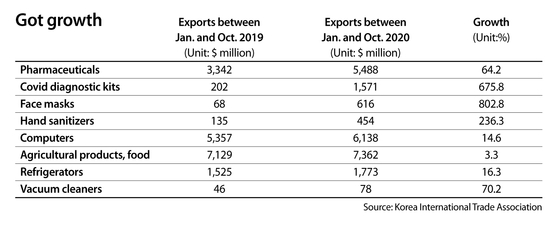New generation of exporters takes on the world
![Young Poong's packaged tteokbokki products. [YOUNG POONG]](https://koreajoongangdaily.joins.com/data/photo/2021/03/31/e614855d-1c24-4f08-a58e-22c35f179768.jpg)
Young Poong's packaged tteokbokki products. [YOUNG POONG]

Young Poong is hardly a household name, but the popularity of its tteokbokki – stir-fried rice cake – has made the Daegu–based company a major new Korean exporter.
People in Japan, Vietnam and Thailand have become tteokbokki fans, some of them inspired by online testimonials by K-pop star Jimin of BTS and Blackpink’s Rosé.
Young Poong started exporting in 2012, and last year over 70 percent of its sales were outside Korea.
The company is just one member of a whole new generation of Korean exporters finding success on the global stage.
The Korea JoongAng Daily's Export Champs series will explore the dynamics of exporting in a changed, post-Covid world and introduce readers to dynamic new players and the products they are selling around the world.
New players in food, cosmetics, biopharmaceuticals and medical devices are capitalizing on the growing popularity of Korean culture. And their emergence couldn't come at a more important time, as the entire planet recovers from a crippling pandemic and some of Korea's traditional exporting industries such as shipbuilding, automobiles and steel are starting to stagnate, hurt by competition from cheap Chinese manufacturers and the prolonged trade row between the United States and China.
Many of those manufacturers were the backbone of Korea’s export-oriented economy as ships, cars and steel have been among Korea's top 10 export items for decades.
But all three industries saw declines in exports last year.

Exports of cars were $19.8 billion between January and October of last year, down 15.7 percent from a year earlier, according to the Korea International Trade Association. Steel exports fell 16 percent to $21.9 billion in the same period.
In the shipbuilding industry, which helped pull Korea out of its post-war poverty and become an industrial power, exports fell 11.6 percent last year to $15.9 billion as orders for vessels were delayed during the pandemic.
“Some of Korea’s main export items – shipbuilding, automobiles and steel – have struggled to maintain growth in production, investment and employment as they face challenges by China and lose price competitiveness,” said Kim Sang-woo, a researcher at the National Assembly Budget Office, a state-run research center.
But in a dynamic economy, as some industries subside, others rise. Some of Korea's hottest products are unexpected successes, the result of shrewd marketing and luck, including the bad luck of a global pandemic.
Shipments of cosmetic products -- the popularity of which piggybacked on the runaway success of Korean pop stars and television and movie productions -- grew 14.6 percent between Jan. and Oct. last year, reaching $6.1 billion.
An official at Korea Trade-Investment Promotion Agency (Kotra) said that consumers abroad have broadened their interest in so-called K-beauty items. A rising segment: beauty tools like make-up brushes.
Agricultural produce and food exports also saw an increase of 3.3 percent in the first ten months of last year.
The pandemic brought into focus Korea's technological capabilities, with Covid-19 vaccines being made locally. Exports of Covid-19 diagnostic test kits increased 675.8 percent in the first ten months of last year. Low-tech face masks rose 802.8 percent.
Korea's new generation of exporters are making new kinds of products and facing very new kinds of challenges, as our Export Champs series will describe.
BY PARK EUN-JEE [park.eunjee@joongang.co.kr]










with the Korea JoongAng Daily
To write comments, please log in to one of the accounts.
Standards Board Policy (0/250자)